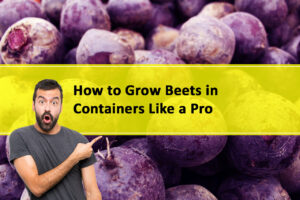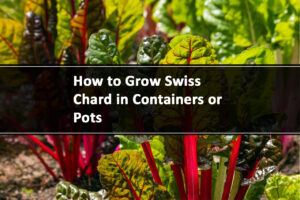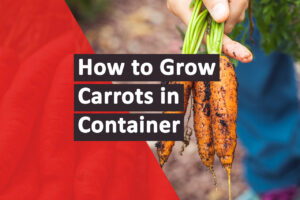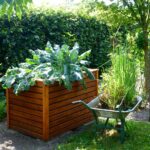Beautiful Plants For Your Interior
Small Space, Big Flavor: Grow Juicy Tomatoes in Pots and Elevate Your Culinary Game
Growing tomatoes in pots offers a convenient and rewarding way to enjoy fresh, homegrown tomatoes, even if you have limited space or a lack of garden beds. With the right tomato varieties, containers, and proper care, you can successfully cultivate delicious tomatoes on your patio, balcony, or any sunny spot.
Growing Tomatoes in Pots
From choosing the best types to reaping your abundant harvest, this guide will walk you through the steps of growing tomatoes in pots.
Choosing the Right Tomato Varieties for Container Gardening
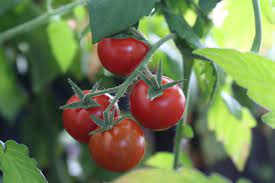
When it comes to container gardening, selecting the right tomato varieties is crucial for success. Certain tomato varieties are specifically bred for compact growth and thrive in the confined space of containers. Look for a determinate or bush varieties such as ‘Celebrity,’ ‘Patio Princess,’ or ‘Tiny Tim.’ These varieties tend to stay more compact and are well-suited for pot cultivation.
Additionally, consider your desired characteristics in your tomatoes, such as size, color, and flavor. There are countless varieties to choose from, including cherry tomatoes, beefsteak tomatoes, and heirloom varieties. Select types that align with your preferences and suit the size of your containers.
Selecting the Perfect Pot and Soil
The choice of pots and soil is crucial for successfully growing tomatoes in containers. Opt for pots that are at least 14 to 18 inches in diameter, providing sufficient space for the root system to develop. Ensure the pots have drainage holes to prevent waterlogged soil, which can lead to root rot.
Using high-quality potting soil formulated explicitly for containers is essential. Such soil blends are lightweight, well-draining, and rich in organic matter. Avoid using garden soil, as it tends to become compacted and doesn’t offer the necessary drainage and aeration for container-grown tomatoes.
Planting Tomatoes in Pots
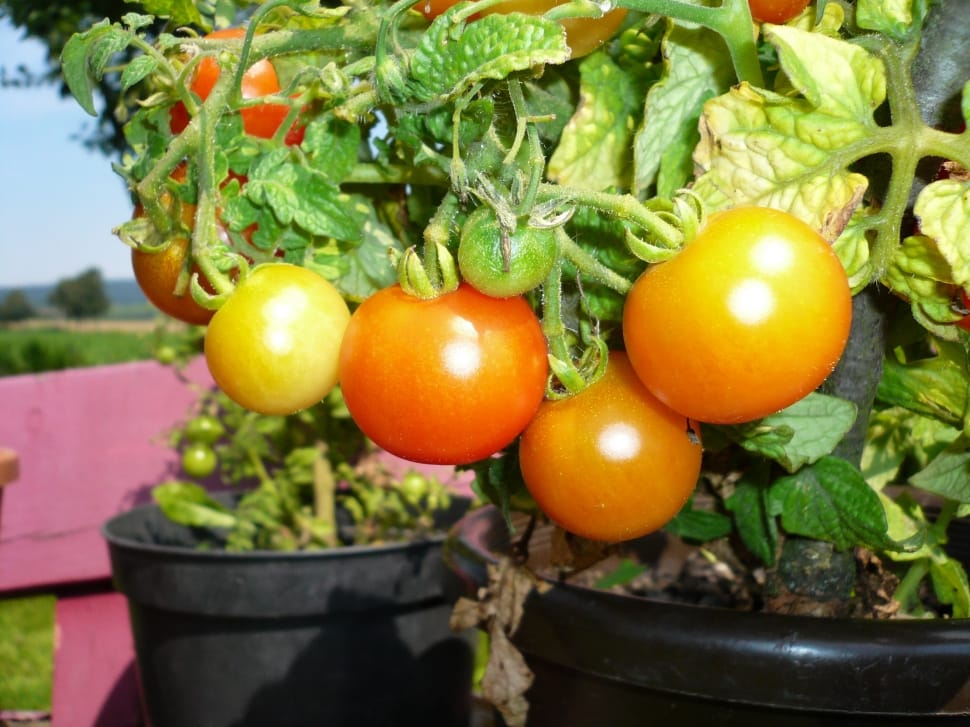
Before planting your tomatoes, prepare the pots by filling them with potting soil, leaving enough space for the roots and the root ball of the seedlings. Gently loosen the root ball of the tomato seedlings before transplanting them into the pots, ensuring they are positioned at the same depth as they were in their previous containers or seed trays.
Maintain proper spacing between the tomato plants to allow for air circulation and prevent overcrowding. As a general guideline, space determinate varieties about 12 to 18 inches apart, while indeterminate varieties may require up to 24 inches between plants.
Watering and Fertilizing Container-Grown Tomatoes
Proper watering is crucial for healthy tomato plants in containers. Aim to keep the soil consistently moist but not waterlogged. Check the moisture level regularly by inserting your finger into the soil to a depth of about an inch. If it feels dry at that depth, it’s time to water.
When watering, ensure thorough saturation, allowing excess water to drain out through the pot’s drainage holes. Avoid overhead watering to minimize the risk of fungal diseases. Consider using a drip irrigation system or a watering can with a narrow spout to deliver water directly to the soil around the plants.
Regularly fertilizing container-grown tomatoes is essential to provide the necessary nutrients. Choose a balanced fertilizer or a slow-release organic fertilizer specifically formulated for tomatoes. Follow the instructions on the fertilizer packaging and adjust the frequency of application based on the plant’s growth and the soil’s nutrient content.
Providing Adequate Sunlight and Temperature
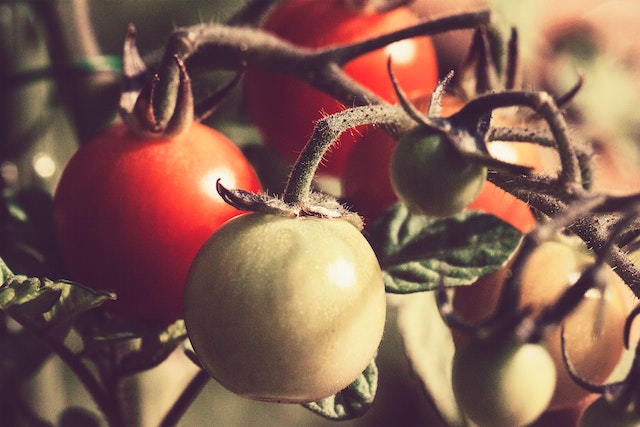
Tomatoes are sun-loving plants, and to thrive in containers, they require a minimum of six hours of direct sunlight each day. Choose a sunny location for your tomato pots, such as a south-facing balcony or patio. If sunlight is limited, consider using reflective surfaces or mirrors to redirect and amplify the available light.
Maintaining the ideal temperature range is crucial for the healthy growth of tomato plants. Tomatoes prefer daytime temperatures between 70°F and 85°F (21°C and 29°C) and nighttime temperatures around 60°F to 70°F (15°C to 21°C). Protect your plants from extreme heat or cold by providing shade during scorching summers or moving them indoors during frosty nights.
Pruning and Supporting Tomato Plants
Pruning and supporting tomato plants in containers help improve air circulation, reduce the risk of diseases, and ensure the plant’s energy is focused on fruit production. Begin pruning once the tomato plants have grown a few sets of leaves.
To prune, remove the lower leaves that touch the soil to prevent soil-borne diseases. As the plant grows, remove suckers—small shoots that emerge between the main stem and the leaf branches. Determinate varieties generally require less pruning, while indeterminate varieties benefit from regular pruning and support.
Provide support for your tomato plants to prevent them from sprawling or falling over. Staking or using cages helps keep the plants upright and facilitates proper air circulation. Use soft ties to secure the main stem to the support structure and adjust the ties as the plant grows.
Managing Pests and Diseases in Container Tomato Gardens
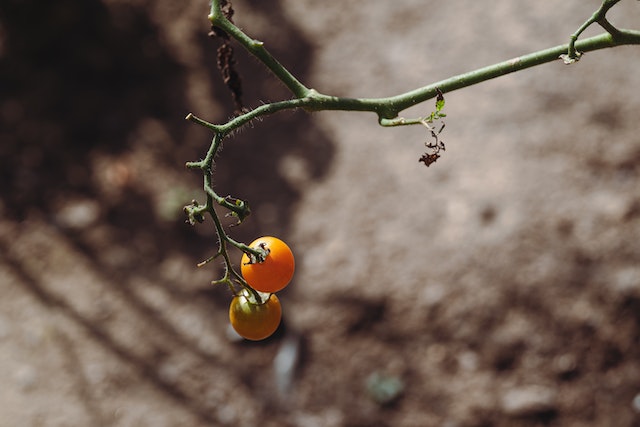
Container gardening doesn’t exempt tomatoes from potential pest and disease issues. Common pests that can affect container-grown tomatoes include aphids, whiteflies, and tomato hornworms. Regularly inspect your plants for signs of infestation, such as curled leaves, yellowing, or visible pests. If detected early, you can employ organic pest control methods like handpicking, using insecticidal soaps, or applying neem oil.
Diseases like early blight, late blight, and powdery mildew can also pose a threat. To minimize disease occurrence, provide adequate spacing between plants for air circulation, avoid overhead watering, and remove any infected plant material promptly. Applying organic fungicides or using preventive measures like copper sprays can help manage these diseases.
Harvesting and Enjoying Homegrown Tomatoes
The joy of growing tomatoes in pots culminates in the harvest season. Harvesting tomatoes at the right stage ensures the best flavor and quality. The ideal time to harvest depends on the variety, but generally, tomatoes are ready when they reach full color, firmness, and size.
Gently twist or use pruning shears to detach the ripe tomatoes from the plants, being careful not to damage the stems or surrounding fruit. If some tomatoes are not fully ripe, you can allow them to ripen further indoors at room temperature.
Homegrown tomatoes are incredibly versatile and can be enjoyed in various ways. Slice them for fresh salads, use them in sandwiches, make pasta sauces, or roast them for a rich flavor. The possibilities are endless, and the satisfaction of savoring your harvest makes every bite even more enjoyable. If you are creative and love more experimenting you can try growing tomatoes in buckets.
Growing Tomatoes in Buckets
Growing tomatoes in buckets is a popular option, especially for individuals with limited garden space or those who prefer container gardening. Here are some steps to help you get started:
- Choose the right bucket: Select a bucket with a capacity of at least 5 gallons (19 liters) to provide sufficient space for the tomato plant’s root system. Ensure that the bucket has drainage holes at the bottom to prevent waterlogging.
- Select a suitable tomato variety: Look for tomato varieties that are well-suited for container gardening. Consider factors such as compact growth habit, determinate varieties (which grow to a certain height and stop), or dwarf varieties. Some recommended varieties for container gardening include ‘Patio’, ‘Tiny Tim’, ‘Bush Early Girl’, and ‘Window Box Roma’.
- Prepare the bucket: Fill the bucket with a good quality potting mix, preferably one specifically formulated for vegetables or tomatoes. Avoid using garden soil as it may be too dense and not provide adequate drainage.
- Planting the tomato seedling: Dig a hole in the potting mix and place your tomato seedling carefully. Gently fill the hole with potting mix, ensuring the stem is securely supported. Leave about an inch of space between the top of the soil and the rim of the bucket.
- Provide support: As the tomato plant grows, it will require support to prevent it from sprawling on the ground and to help it maintain an upright position. You can use stakes, tomato cages, or trellises to support the plant. Install the support structure at the time of planting or soon after to avoid disturbing the plant’s roots later.
- Watering and fertilizing: Tomatoes in containers require regular watering to moisten the soil. Check the moisture level by inserting your finger about an inch into the soil. If it feels dry, it’s time to water. Fertilize the tomato plants with a balanced fertilizer according to the package instructions, or consider using organic options like compost or fish emulsion.
- Sunlight and temperature: Place your tomato bucket in a location that receives full sunlight for at least 6-8 hours daily. Tomatoes thrive in warm temperatures, ideally between 70-85°F (21-29°C). Protect the plant from extreme temperatures, such as excessive heat or frost.
- Pruning and maintenance: Monitor the plant regularly for any signs of pests or diseases. Remove any yellowing or diseased leaves to maintain plant health. Additionally, pinch off the suckers (the small growth that appears in the leaf axils) to direct energy toward fruit production.
- Harvesting: Tomatoes usually take around 60-80 days to mature, depending on the variety. Harvest the tomatoes when they are fully ripe and have developed their desired color. Gently twist or cut the fruit from the vine to avoid damaging the plant.
People Also Searched For:
-
Can I grow tomatoes in any pot?
While tomatoes can be grown in various types of containers, it’s essential to choose pots with adequate drainage and sufficient size. Avoid using pots without drainage holes, as they can lead to waterlogging and root rot.
-
How often should I water my potted tomato plants?
The frequency of watering depends on various factors such as temperature, humidity, pot size, and soil moisture. As a general guideline, check the moisture level by inserting your finger into the soil. Water when the top inch of soil feels dry.
-
Do container-grown tomatoes produce fewer tomatoes than those grown in the ground?
Container-grown tomatoes can be just as productive as those grown in the ground, provided they receive proper care and attention. With the right varieties, adequate sunlight, regular watering, and fertilization, container-grown tomatoes can yield a satisfying harvest.
-
Can I reuse the soil in my tomato pots for the next growing season?
Reusing the soil in your tomato pots for the next growing season is possible with proper soil preparation and nutrient replenishment. Remove any plant debris and amend the soil with organic matter or compost before planting again. Additionally, consider rotating your crops to minimize disease buildup.
-
Can I grow other vegetables alongside tomatoes in the same pot?
While tomatoes can be combined with certain companion plants, it’s generally advisable to give tomatoes their dedicated space. Tomatoes have extensive root systems and can overshadow or compete with other plants for nutrients and resources.
Bottom Line on Growing Tomatoes in Pots
Growing tomatoes in pots is a rewarding and accessible way to enjoy the taste of fresh, homegrown tomatoes, even if you have limited gardening space. By following the steps outlined in this guide, from selecting the right tomato varieties and pots to providing proper care and maintenance, you can create a thriving container garden filled with delicious tomatoes.

